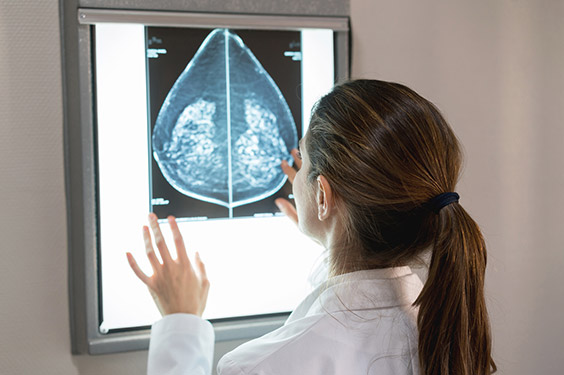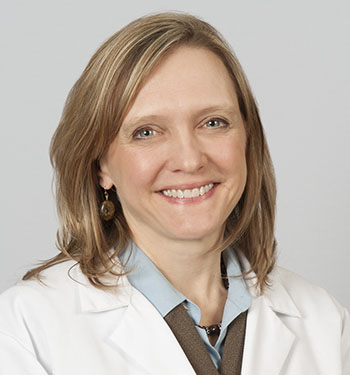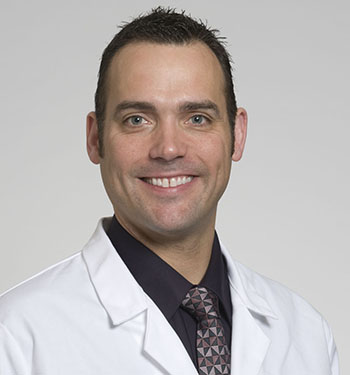Are you overdue for your mammogram?
Ohio’s leader in breast health makes it safe, easy to get your mammogram.
There are a lot of questions and what-ifs when it comes to having a mammogram, but even in these uncertain times, your health should be a priority. For your empowerment, for your peace of mind, it’s important to schedule your mammogram.
Is it safe to come to Cleveland Clinic?
Cleveland Clinic has always been committed to delivering safe care. Now, in response to COVID-19, we’re taking unprecedented action to keep patients and caregivers safe in our facilities while fulfilling our mission to be the best place for care, whenever you need it.
“In times like these, it’s important to keep up with your medical care. Delaying important health screenings like mammograms is a real concern,” says Kristen Dawson, MD, a Cleveland Clinic general surgeon who provides patient care at Cleveland Clinic Medina Hospital Medical Office Building and Brunswick Family Health Center.

When is it time to get a mammogram?
No matter your age, medical history or diagnosis, Cleveland Clinic — Ohio’s leader in breast health – offers personalized breast care from screening to treatment.
Screening mammogram recommendations vary, so Cleveland Clinic has reviewed current guidelines (some of which differ from one another) and developed consensus guidelines for patients. Current recommendations are that women should have the first option to start screening mammogram at age 40. From the ages of 45-55, we recommend yearly screening for all women. Then, at the age of 55, each woman should have a conversation with her doctor about whether she should continue every year or go to an every-two-years screening schedule.
Regardless of your age, if you’re experiencing breast symptoms such as pain or nipple discharge or have felt a lump, you should seek evaluation from your medical provider and diagnostic imaging should be scheduled as soon as possible.
“Cleveland Clinic strongly believes that patients should play an active role in their healthcare by asking questions, discussing treatment alternatives and working with their healthcare team to determine their best options. When it comes to breast health, we encourage shared decision-making because it’s important to follow a screening program that works for you.” continues Dr. Dawson.

Which screening is best for you?
Mammography uses X-rays to detect different densities in the breast, including masses that may be tumors. Your physician will make a recommendation on the type of screening that is best for you.
Options include:
- Screening mammograms, in which the breast is compressed in two ways, from top to bottom and obliquely side to side. In some cases, overlapping tissue can cause the resulting image to look like cancer, or obscure small breast cancers. While most abnormalities in a mammogram are not breast cancer, they can lead to the need for further testing.
- 3D mammography, also called digital breast tomosynthesis, is similar to digital screening mammography in that the breast is compressed. However, with this advanced technology, X-rays pass through the breast at many different angles, creating a series of images. These images can reduce the degree of overlap and allow a radiologist to detect small breast cancers with fewer call-backs.
- Breast magnetic resonance imaging (MRI) can provide further detection of lesions, though not all lesions are cancerous. To avoid unnecessary biopsies, screening MRI is used only in high-risk cases in combination with screening mammography.
- Breast ultrasound allows radiologists to distinguish between solid and cystic breast masses. While very sensitive, ultrasound is not always very specific, so is used only in certain situations, and as an adjunct to mammography. In young women, ultrasound is the usual breast imaging of choice, rather than mammography.
The combined sensitivity and specificity of screening mammography and 3D mammography make them the best screening tools for breast cancer detection.
In times like these, it’s important to keep up with your medical care. Delaying important health screenings like mammograms is a real concern.
Kristen Dawson, MD
Lorem ipsum dolor sit amet, consectetur adipiscing elit
Lorem ipsum dolor sit amet, consectetur adipiscing elit, sed do eiusmod tempor incididunt ut labore.
Risus commodo viverra maecenas accumsan lacus vel facilisis. Lorem ipsum dolor sit amet, consectetur adipiscing elit, sed do eiusmod tempor incididunt ut labore et dolore magna aliqua.
What if it is breast cancer?
“If cancer is found, Cleveland Clinic will assemble a team to treat your unique needs. Your team might include medical oncologists, radiation oncologist, surgeons, plastic surgeons, radiologists, psychologists, nurses and social workers,” says Mir Ali, MD, a Cleveland Clinic regional medical oncologist who treats patients at Medina Hospital/Medina Medical Office Building and Strongsville Family Health Center. “This collaboration helps identify the most effective care, even for patients with the most complex cases.”
“Treatment plans, which typically begin within a few weeks of diagnosis, aim to eliminate the breast cancer and reduce the chance of it returning or traveling to a location outside of the breast,” adds Kevin McComsey, MD, an OB-GYN who also treats patients at Cleveland Clinic locations in Medina, as well as Brunswick Family Health Center. “Type of treatment depends on the size and location of the tumor in the breast, the results of lab tests done on the cancer cells and the stage or extent of the disease. Your medical team usually will consider your age and general health, as well as your feelings about the treatment options.”
For empowerment. For peace of mind. For every care in the world. Walk in or schedule your mammogram today.
How to schedule a mammogram?
Click here to view all mammography locations and hours, including those offering walk-in screening mammograms for women with no breast symptoms.
Northeast Ohio Appointments 440.613.4956.
Medina Appointments 866.721.5350.





